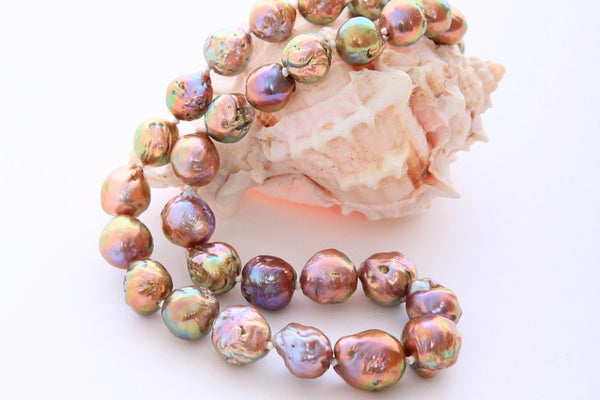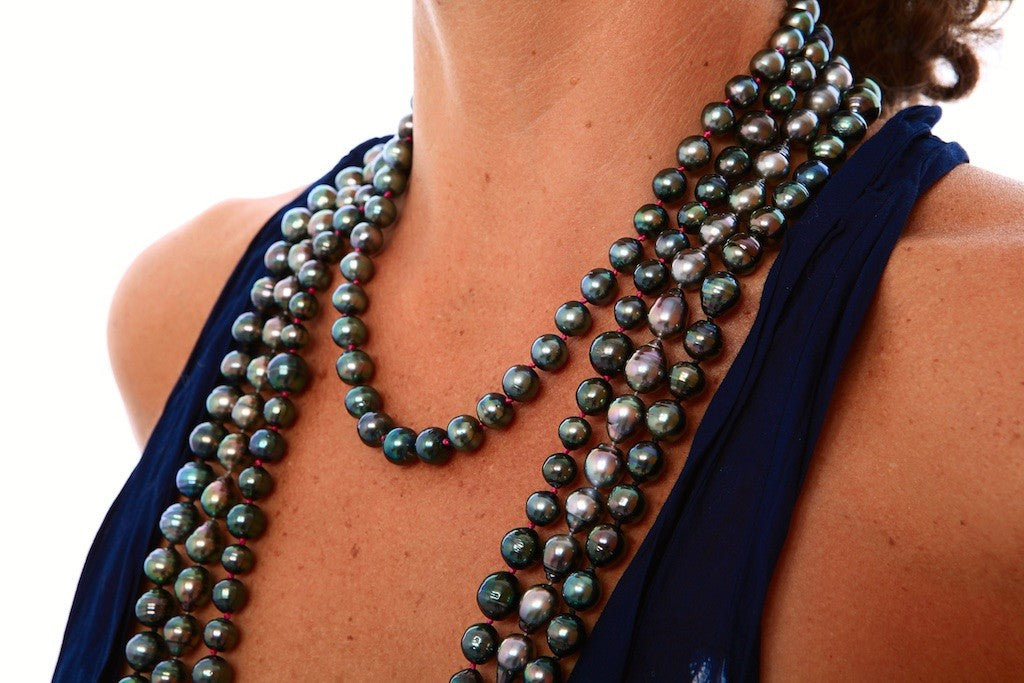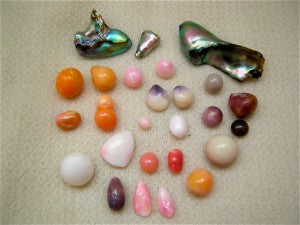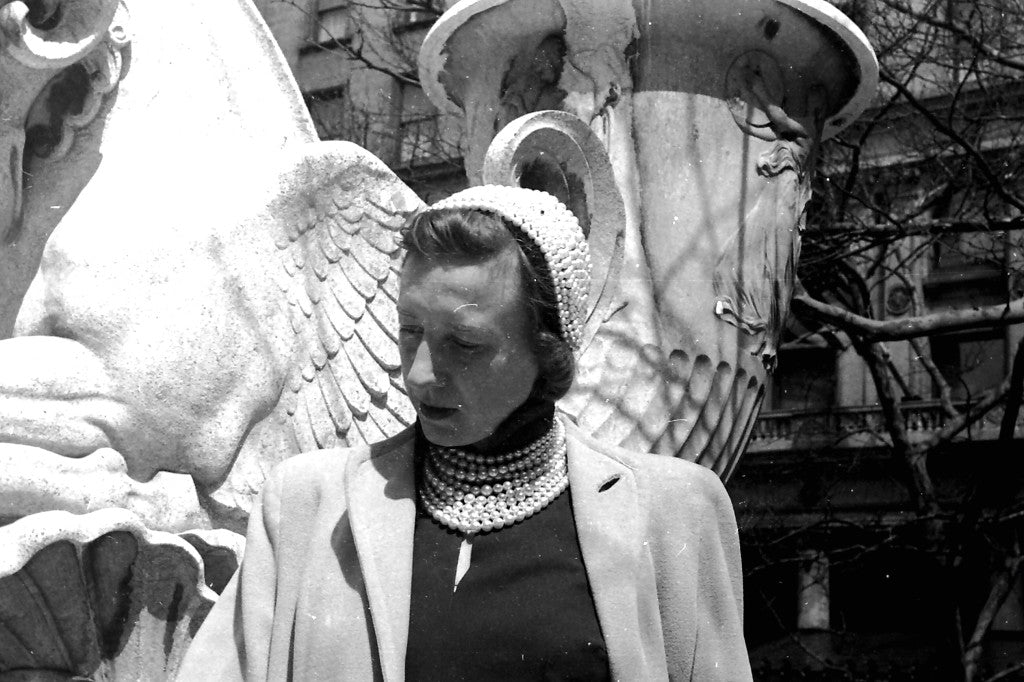FOR A RICH HISTORICAL EXPLANATION OF THE NAMING OF PEARLS, CONTROVERSIES, IN DEPTH INFORMATION ABOUT THE PEARLS WE SELL AND A HISTORY OF FRESH WATER PEARLING IN JAPAN
A GIFT FROM FUJI TO YOU!
CLICK HERE


For more information about pearls of any sort, the history, the wild, the producers and the market that drives them... I urge you to invest in the best book ever written on the subject. PEARLS by Elizabeth Strack is the ultimate compendium.
For a fantastic never ending up to date discussion about all types of pearls :
It is the world's largest online pearl forum. Just as human parents pass along genetic traits and characteristics, an oyster or mussel that carries a pearl, along with environmental factors, determines what the pearl will look like. In both natural and cultured pearls, color is greatly influenced by the mollusk’s mantle color; size is usually dictated by length of gestation; and the pearl’s shape is determined by the nuclei that is implanted (or implants itself) inside the mollusk. Finally, geography plays a role in a pearl’s ultimate appearance, as different mollusk species live in specific parts of the world. Throughout our Web site, you will see references to these major pearl types.
To call yourself an expert in pearls for a fraction of the cost of gemology school, I urge you to enroll in the CPAA online course! It is constantly updated and will teach you about not only how pearls are made but how to grade and identify all the different types.
It is a fantastic way to educate yourself in the comfort of your own home.
(IF YOU WOULD LIKE A COUPON CODE TO TAKE THIS COURSE FOR FREE, PLEASE EMAIL ME DIRECTLY!)
Click on any of these pearl varieties for more detailed information.
Found mainly along the coasts of California and Mexico, Abalone pearls come from the most colorful of all pearl-producing mollusks. Being hemophiliacs, Abalone will bleed to death with only the smallest incision. Full pearls from the Abalone are always natural pearls, while half pearls or "mabe" pearls are made by implanting nuclei along the inside of the Abalone shell.
Although beautiful, we do not consider "mabe" pearls to be true pearls.
Wonderful and lasting jewelry can be made with wild found Abalone pearls, but it is very rare to find a pearl that is stable enough to be set.
Abalone pearls, as most wild found natural pearls are generally sold by the carat.
Most Abalone pearls are found in the natural form of a horn or a "shark's tooth".
A round Abalone pearl above a couple millimeters in diameter is an extremely rare occurrence.

a trio of natural wild found Abalone pearls from the coast of California

a natural wild found Abalone pearl in the shape of a heart! designed and produced by Kojima Pearl Company, now in a private collection
These cultured pearls are grown exclusively in-body in the Pinctada species— a small oyster that lives in temperate ocean waters. Following WW2, Japanese cultured pearls held sway around the world for several decades.Valuation of an akoya pearl is based on perfectionism and size. The shape is usually prized for faithful adherence to the perfectly spherical shell-bead nucleus (generally, freshwater mussel shells are used, preferably from the U.S.A.). Cultivated pearls can range from 3.5 to 11mm, although those falling within the large end of the spectrum are rarely round. Large cultured pearls tend to have more irregularities because they need more nacre coating than small pearls to avoid exposing the nucleus.
a photo of Frieda Voll of Pacific Pearls circa 1948,
wearing many strands of Japanese Akoya pearl strands
The legendary Lauren Bacall demonstrating why even today : white round Japanese Akoya pearls are still what most people associate with true pearls.
Akoya pearl production was also the birthplace of "keshi" pearls.
The rarest and most valuable of all natural pearls, Conch pearls come from many different subspecies of conch. Conch pearls used in jewelry mostly come from the Queen Conch (Strombus gigas) which are found throughout the Caribbean and Central American oceans. The finest quality conch pearls have a glowing pink color and a brilliant flame pattern below the surface.
More and more we are seeing Horse conch pearls on the market, they are also very valuable, but their mustard and peachy brown tones do not fetch the same prices as the pink Queen Conch pearls.

Freshwater pearls are produced by mussels that live in rivers, lakes or ponds. The majority of available freshwater cultivated; high quality natural specimens are rare and almost non-existent. Freshwater pearl cultivation begun experimentally in Japan in the 1920s and 30s, and became an industry during the 1960's to early 1980's, albeit on a smaller scale than ocean (Akoya) pearls. Today upwards of 90% of all pearls on the market are freshwater pearls produced in China.
Freshwater pearls from Japan.
Lake Kasumi-ga-Ura, some 40 miles northeast of Tokyo, was a center of freshwater pearl cultivation from the 1960s to 1980s, 2nd only to Lake Biwa (near Kyoto, Japan) in number of cultivators and production. Most efforts ended due to environmental conditions during the 1980s, and for a decade there was no production. Since the early 1990s, a small handful of pearl farmers, without employees, have produced very small quantities of in-body bead nucleated freshwater pearls. We have acquired a considerable portion of the more baroque shaped pearls produced there.

Natural, wild ocean pearls found on the Eastern shore of North America. Quahog (mercenaria Mercenaria) pearls range in color from white and beige to dark purple and lilac.
Grown in black-lipped pearl oysters, Tahitian pearls don’t actually come from Tahiti, but rather from French Polynesia, and other small atolls throughout the South Pacific. Tahitian pearls (or black pearls) come in a variety of exotic colors.

Cultured pearls from the Sea of Cortez Mexico, North America's ONLY saltwater pearl farm! The very existence of this farm is owed to the diligence, intelligence and the absolute fascination with nature of it’s farmers.
Natural and cultured pearls grow in both saltwater and freshwater environments. Generally speaking natural wild pearls are those found outside of a pearl farm. Those found in the wild are a surprising and precious gift. Cultured pearls are those grown with the addition of a nuclei. They are grown on farms and are not considered to be natural pearls. Natural pearls are those found in the wild.

"keshi" means poppyseed in Japanese and was once only used to describe the tiny
misshapen pearls that would be found growing along side cultured Japan Akoya pearls. Today the term is used for many types of pearls.















